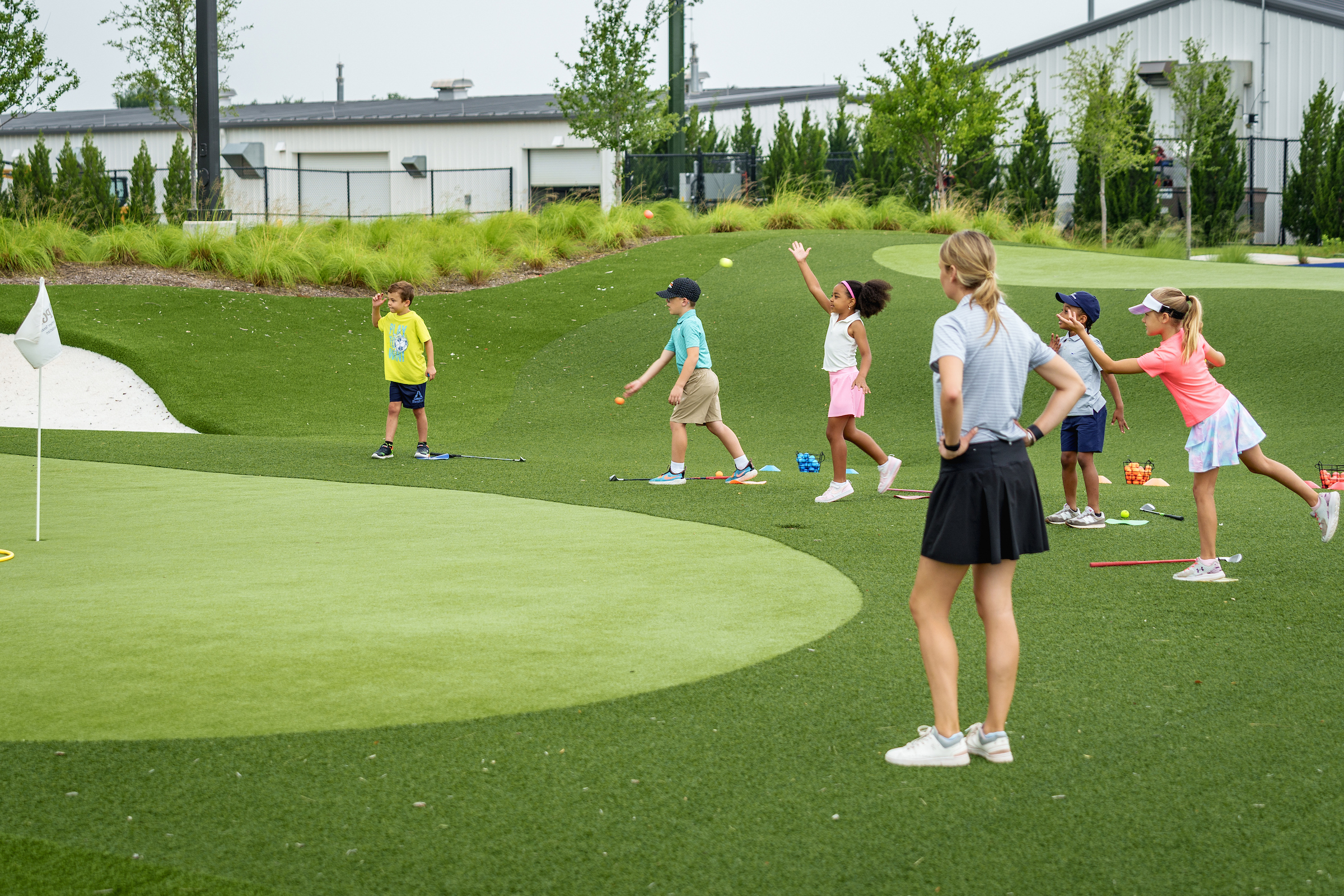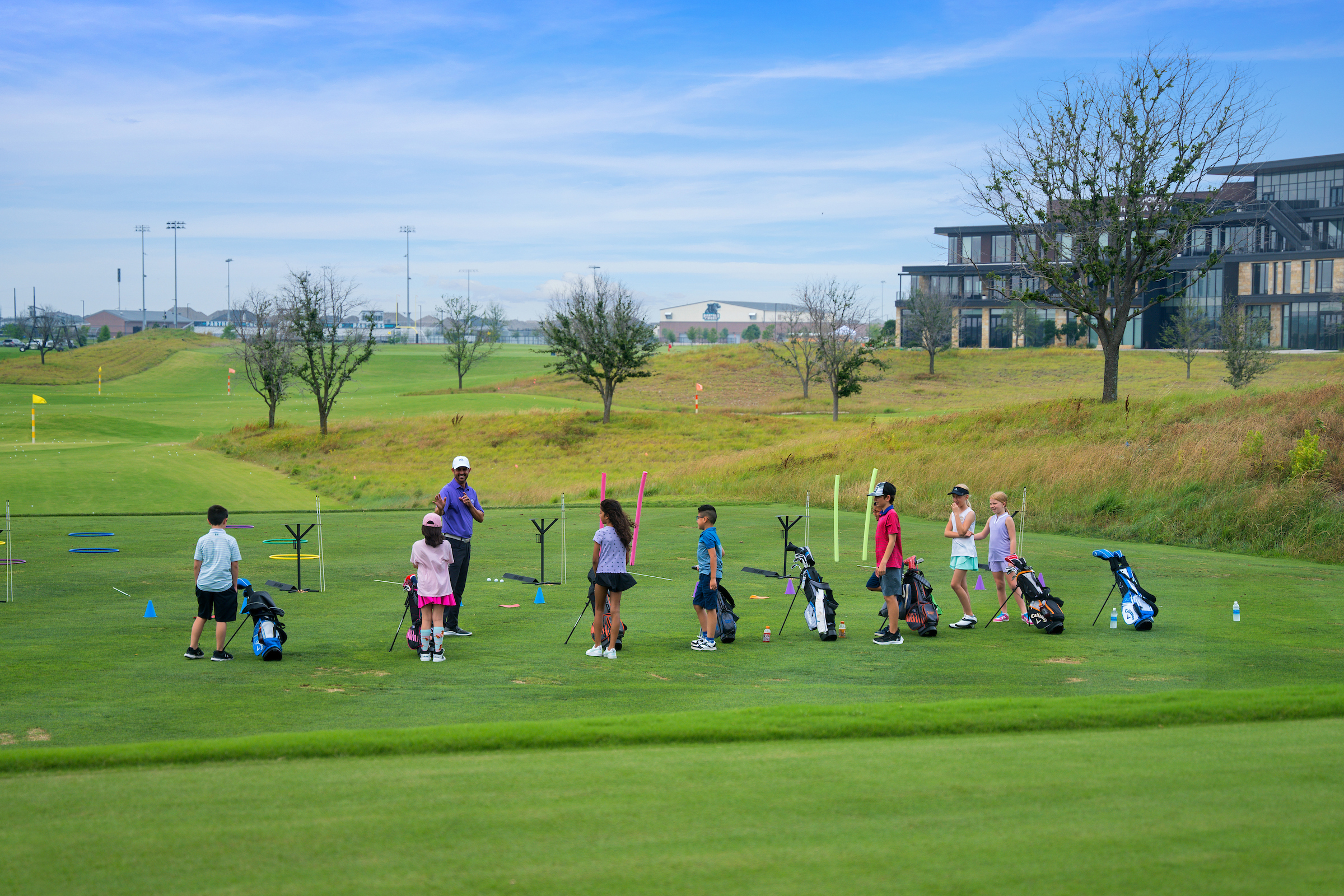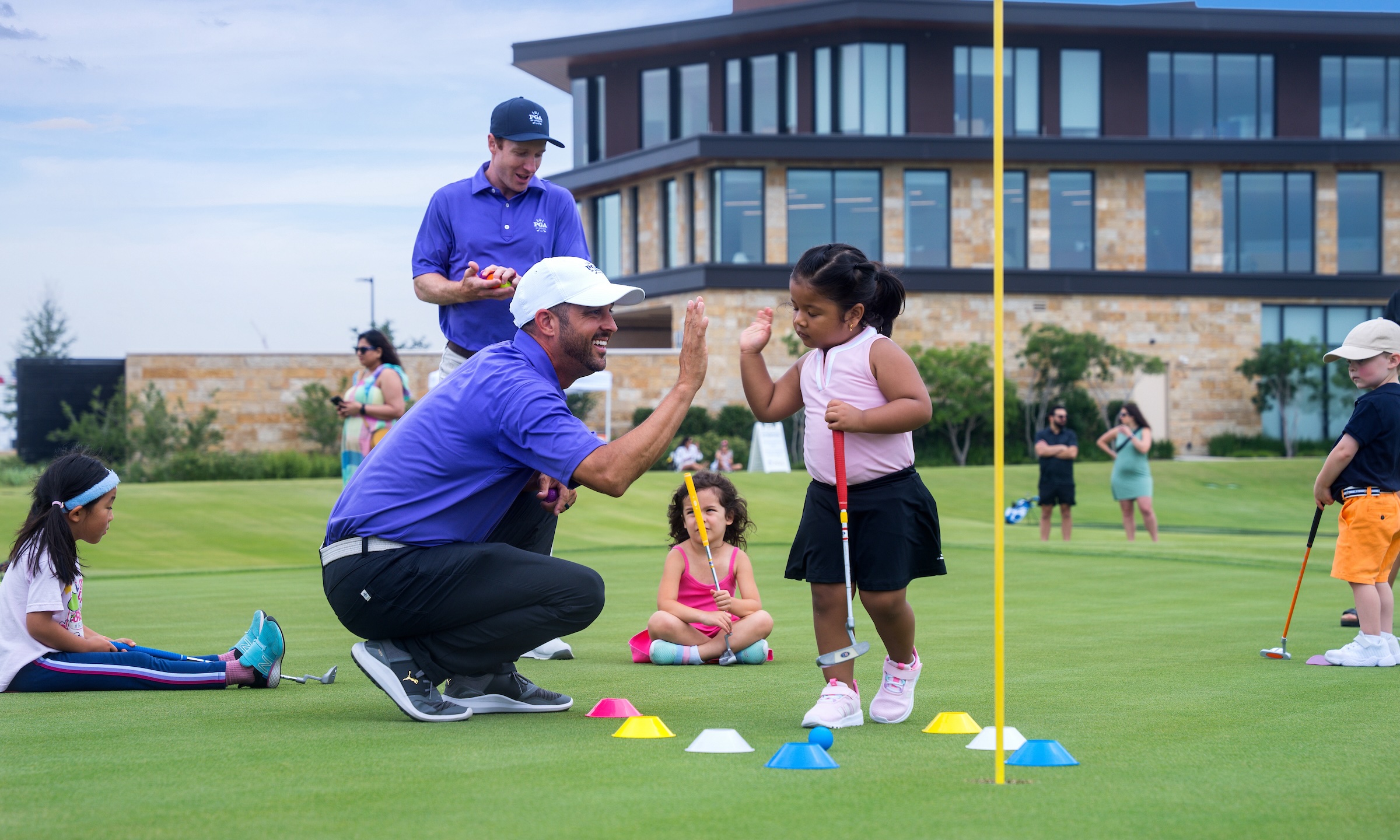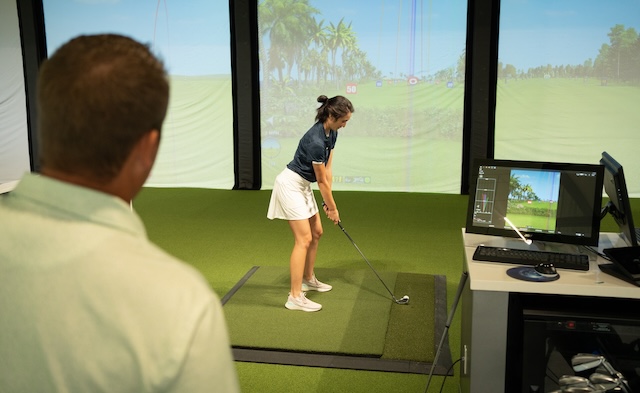If you're a parent or caregiver, your favorite athlete is probably the one you're raising. To make your child's sports experience an amazing one, there are some questions to ask before you dive into a local program.
PGA Jr. League is committed to aligning with the American Development Model (ADM), a proven, long-term athlete development model championed by the United States Olympic and Paralympic Committee that has been successfully applied to USA Hockey, USA Basketball, USA Lacrosse and more.
The goal of ADM is to create positive experiences for participants of all levels and offer a roadmap for program development focused on individual growth. ADM provides age-appropriate guidelines for the golf industry to help people enjoy golf, foster a lifelong passion, and excel in the sport.
PGA Jr. League is committed to aligning with golf’s ADM to provide developmentally appropriate experiences in a fun, engaging, and progressively challenging way that sets our players up for lifelong sport participation. Through a welcoming format, age-appropriate yardages, All-Star player age minimums and more, the ADM is implemented throughout our entire program from start to finish.
PGA Jr. League is led exclusively by PGA and LPGA Professionals, experts in the game who are uniquely positioned to coach PGA Jr. League teams. Many are ADM certified and can answer additional questions you have about your child's experience.
As you prepare to embark on a youth sports experience, here are 10 questions to ask of yourself, your child and your local program that center the principles of ADM:
1. Have I asked my child if they want to play sports?
Is it to have fun with classmates? Be tested at the highest level competitively? What do they want to get from the activity? Finding the right program starts with understanding a child’s social-emotional needs.
2. Have I asked my child which sports interest them?
Most kids get funneled into the same small handful of sports. But there are 120 of them offered across the U.S., with programs that might just be a few miles away. There’s a sport for every kid. Explore the options with them.
3. Do I encourage unstructured and loosely structured play?
Michael Jordan had a “love of the game” clause in his NBA contract that allowed him to play pickup hoops. Build the same ethos into your kid’s experience so it’s not all organized competition. Give kids equipment, and get out of the way.

4. Does my child’s program promote multi-sport participation?
As early as grade school, your child may get pressure to focus on playing one sport year-round. Research on child and athletic development rejects this approach. Ask program leaders how they’ll make room for playing other sports.
5. Are the coaches trained in key competencies to work with kids?
The best programs mandate training in coaching philosophy/methods, sport skills & tactics, and safety protections including First Aid and CPR (and, in collision sports like football and hockey, concussion management).
6. Does the program embrace small-sided, age-appropriate play?
Kids are not miniature adults. Six isn’t even 16. Children learn better and have more fun when play spaces, equipment, and the number of participants on the field/court/ice are modified to their level. Small rosters help, too.
7. Does the program offer an appropriate practice-to-game ratio?
Kids want access to the action. You want them to be physically active, while also minimizing the costs and time allocated to away-game transportation. The best programs understand that development mostly occurs in training. At least two practices for every game is best.

8. Does the program encourage equal playing time?
There’s a time for programs to sort the weak from the strong in sports. It’s not before kids grow into their bodies, minds, and interests. Through age 12, at least, programs should invest in every kid equally. That includes playing time.
9. Does the program systematically seek feedback from kids and parents?
A simple online survey is easy enough to create and send at the end of the season, collecting insights that can be shared with program leadership to improve quality and foster retention. Honor the programs that honor input.
10. Does the program make efforts to foster physical literacy?
Physical Literacy is the ability, confidence, and desire to be active for life, with an emphasis on fundamental movement skills – not just sport-specific skills. Learning to move well can open access to dozens of sports.
Learn more about golf's ADM at PGA.com/ADM.









